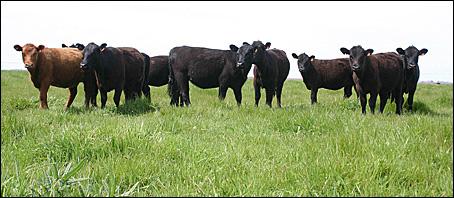Let’s allocate the pasture in the afternoon
Dr. Kathy Soder
USDA-ARS Pasture Systems and Watershed Management Research Unit,
University Park, PA
The problem¶
Grazing enterprise profitability is greatly influenced by the plant/ animal relationship. However, grazing managements optimizing this relationship in view of increase animal performance are still lacking.
Significant increments in herbage dry matter and sugar concentrations occur from dawn to dusk. Such increments promote pasture digestibility and energy concentration, and consequently nutritive value as the day progresses.
Optimizing grazing management¶
Cattle decisions such as “when” to begin and “how” to distribute their meals determine how they distribute feeding time to meet nutrient requirements. Cattle show a daily frequency of four or five major meals with the longer and more intense meals occurring in late in the afternoon and early in the evening.
Therefore, if our objective is to improve animal performance and efficiently use the nutrient supplied by pasture, it may be advantageous to stimulate cattle to graze longer and more intensively during dusk.
Studies conducted in Argentina (National University of La Plata) and
University of Arkansas show that linking the natural grazing pattern
with the fluctuations in pasture nutritive value through timing (AM vs.
PM) of the fresh pasture allocation (strip-grazing) modifies the
frequency, intensity and distribution of meals, altering the timing of
pasture and therefore nutrient intake.
-
Afternoon pasture allocation (3:00 PM vs. 7:00 AM) caused beef heifers to graze longer (Figure 2) and eat more pasture late into the afternoon and early in the evening, when pasture had the highest quality.
-
Afternoon pasture allocation led to greater daily weight gains (0.73 lb) and changes in body condition score (0.0145 pts.) than heifers turned into the new pasture during the morning.
These results are supported by:
-
A greater nutrient intake when pasture has better nutritive value, less fiber and more sugar, digestibility and energy.
-
A reduction in pasture intake during the morning, which generate “hunger” at the time they enter to the new pasture, and stimulates pasture consumption in the evening.

Implications¶
-
PM grazing combines the better quality of pasture with the time of day when animals want to eat more. It is a win-win situation.
-
A simple change in timing of pasture allocation may result in better animal performances for no additional cost.
-
This grazing management emerges as an interesting tool for the graziers of the northeastern US.